Why I Choose a 40-Year-Old Nikon Film Camera
I started my photography journey with Nikon Digital SLRs. After shooting digital for a few years and posting my photos to Instagram(back then when Instagram was still cool to use), I begin to notice some very beautiful photos posted on there that are actually shot with film. Attracted by the beautiful vintage colour tone of film photos, I went and did more research on film photography, which you can read more about it in my previous post.
Naturally, I started looking at Nikon film cameras, as one of the most important reasons is that Nikon is known for its highly compatible range of lenses. Most of their lenses can be used on cameras made all the way back in the 1960s up to the latest model made today in 2018. So I figure I could use the lenses that I already have - specifically my 50mm f1.8D on an old Nikon Film SLR that I was about to get.
Since I'm searching for a very old camera, it is only available on the 2nd hand collectors' market. After searching for some time comparing between availability, price, and model, I was fixated on the Nikon FM model due to its aesthetic look on the body design, as well as the fully mechanical nature.
I was lucky to get a good deal on a fully functional, well-kept model of it locally from a guy who was selling it online. I have been using it since I got it in 2014, and would like to outline some of the key features of the Nikon FM here.
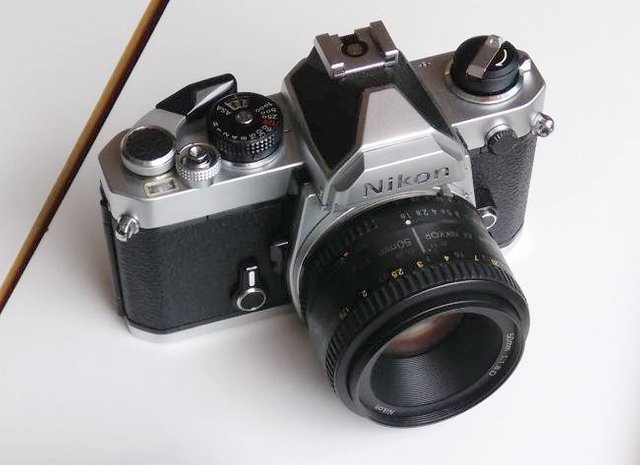
1. It is Beautiful
I still remember the moment when I set my eyes on the Nikon FM, it was love at first sight. The chrome finishing and the polygonal surfaces were such beautifully designed that it actually motivates you to take good pictures with it. The compact design also helps a lot if you are into street photography, as it is less intrusive than a huge black DSLR when you approach strangers for photos on the street.
The ergonomics of the knobs and buttons on it were optimal and felt right in your hands. The position of the shutter release button is well positioned for natural and unstrained finger contact, and it comes with a safety lock feature to prevent accidental shutter trigger. How thoughtful is that!
The film advance lever also acts as an on-off switch for the metering that you can turn off to conserve battery while not in use.
The shutter speed dial is huge and the numbers on top were engraved to ensure the readings will last longer than the lifespan of the camera. It is click stopped and knurled for accurate and effortless manipulation. The speed dial also acts as the ASA film speed selection dial. To adjust it, you just need to lift and turn it to the desired value seen through the dial second layer.
I would say adjusting all the knobs and dials is part of the fun operating the camera!
2. High Build Quality
The Nikon FM was one of the first compact professional grade SLRs on the market. The housing and most of the control components were constructed entirely of metal, making it one of the most durable and reliable SLR camera system out there.
When you hold it in your hands, it feels very solid to the touch. The weight not only helps in stability while capturing images, but it also gives you a sense of confidence that you can rely on it to produce high-quality photos in any kind of environment.
Just picture this: The Nikon FM was manufactured in 1977, and everything is still functioning today in 2018 in tip-top condition. And I believe it could easily outlast my lifetime if it's being handled properly.
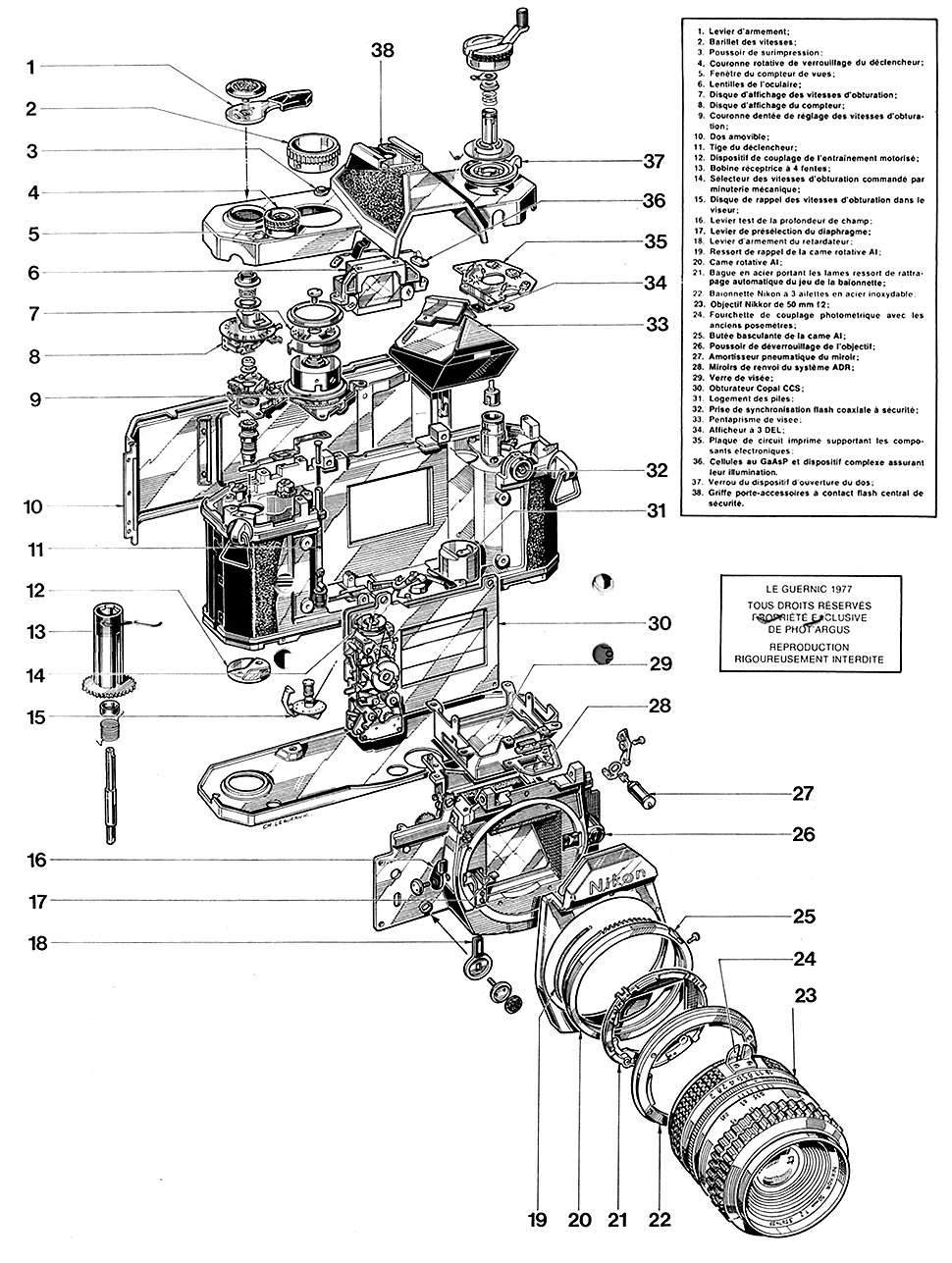
(Image Source: https://gizmodo.com)
3. Battery Not Required
Nikon FM is built entirely mechanical, and the sole purpose of the battery is just to power the light metering. Therefore, it is possible to operate the camera without any battery. This can be useful for extended period of outdoor shooting assignment, where you don't have to worry about finding an electrical outlet to recharge your batteries.
This also means that it doesn't have an auto-rewind motor for the film roll. Once you are done shooting a roll, there's a lever on the top where you can unfold to rewind your exposed films back into its casing, and take it out to send for developing.
4. Uses Nikon F Mount
This is perhaps the main and most important reason that I choose this camera over other make: the ability to mount any NIKKOR lens made from the 1960s up to new lenses that are being released recently. Of course, you may lose some modern functionality in new lenses such as autofocus. But hey, Nikon FM is a manual camera and it was meant to be used in such manner!
If you could get a set that comes with a lens that is released around the same time as the camera, then they will be the perfect match. Not only the lenses are built very solidly intended for heavy use, but the optical quality of the glass piece is also nothing less than excellent.
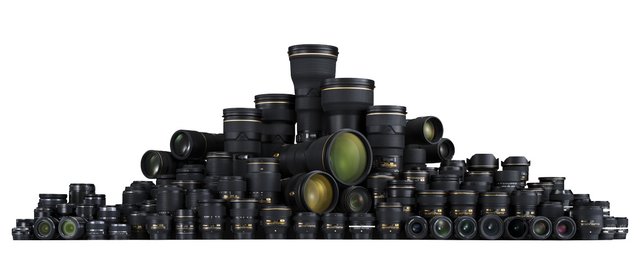
(Image Source: www.nikonistas.com)
As for myself, I'm currently using a slightly modern fixed focal 50mm f1.8D NIKKOR prime lens on my Nikon FM, and it has been a blast to shoot with. I'm able to achieve very sharp images as well as beautiful bokeh effect with the wide aperture.
5. Built-in Metering
Most of the time metering won't be working in these old cameras, mostly due to batteries being kept too long inside the compartment and started leaking. I'm lucky to get mine with metering working perfectly.
As an amateur like me, metering is very important to ensure I get a well-exposed shot, especially when there's no preview on a film camera, unlike in digital camera.
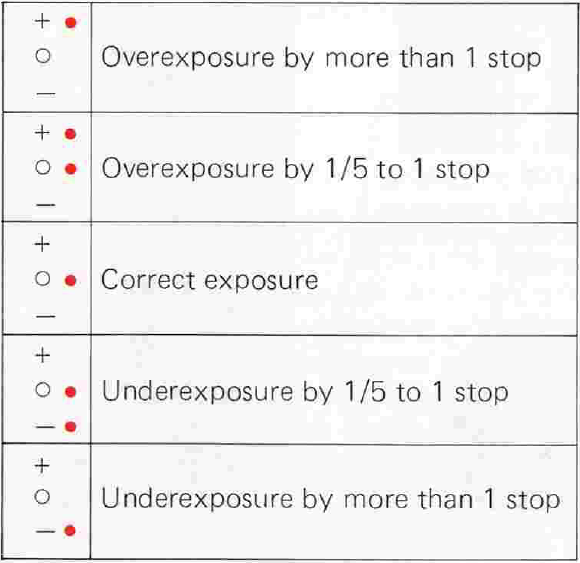
Although the Nikon FM comes with just 5 levels of exposure level indication, which represented by a combination of 3 LEDs viewable from the viewfinder, but don't be fooled by its simplicity. The center-weighted metering is extremely accurate if followed.
My photos always turn out great in terms of exposure level. It was hardly over- or underexposed, unless when I'm shooting a scene with high contrasting foreground and background exposure. That is when my skill comes to play, as I have to point at the main subject and adjust for correct exposure, before recomposing my frame for the actual shoot.
6. Huge Viewfinder
Although the viewfinder coverage is only about 93% of the picture field, it is still very huge and well lit, and very easy on the eyes.
While composing your shot through the viewfinder, there is no need to pull away from the viewfinder to adjust any of the camera settings. All the information you need is right on the sides of the huge viewfinder.
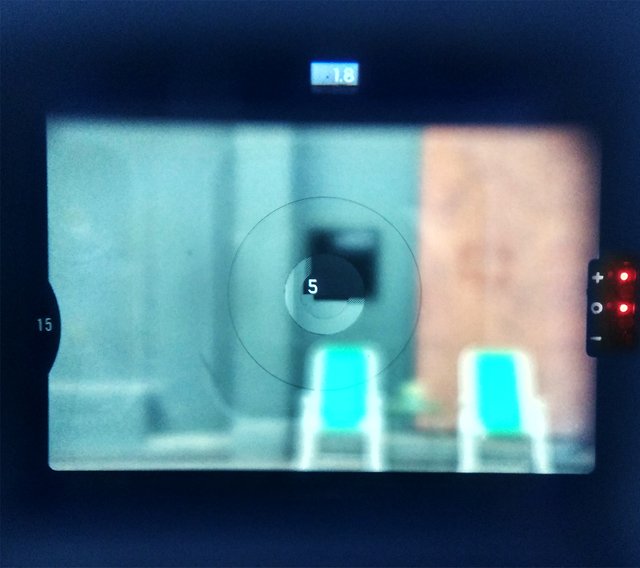
You can see the shutter speed on the left, the aperture value on top, and exposure level on the right. All three indications will change when you change them on the controls.
In the middle of the viewfinder, there's a split-image rangefinder spot that will assist you to focus your image as you twist the focusing ring on your lens. It is extremely precise and allows you to perform pinpoint focusing.
7. DOF Preview, Self-timer, and Multiple-exposure
You may think that such an old camera will be lacking in features compared to modern day cameras. But this compact Nikon FM is really packed with every essential feature that a photographer ever needs. No more, no less.
To the side of the lens, there's a lever for Depth-of-field preview, where you can preview the effect of aperture value through the viewfinder itself.
There's also a self-timer if you are using a tripod and want to prevent any vibrations while pushing down the shutter button.
Lastly, there's a button once pushed and hold, allows you to pause the film advancement for the next shot, so that you can double-expose the previously exposed frame. This feature opens up some degree of creativity play in your shootings.
Features That I May Have Missed Out
There's still much to learn about this camera. I'm still far from reaching the limit and full capabilities of this camera. Therefore, there may be features or functions that I may not have discovered yet. If you happen to own the same camera and there are features that you would like to share to me, do leave a comment below.
I hope the information I shared above are useful for those who are looking around for a film camera. If you are looking into getting a film camera yourself and still have questions, feel free to drop a comment below. I will be more than happy to help answer them here.
Thanks for reading!
More to come..